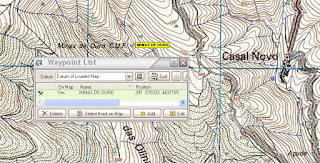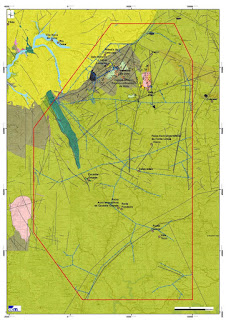Human health risks in an old gold mining area with circum-neutral drainage, central Portugal
Human health risks in an old gold mining area with circum-neutral drainage, central Portugal
Abstract
The former mine of Escádia Grande was active at the middle of 1900 and
was exploited for Au and Ag. The mineralized quartz veins consist mainly
of quartz, arsenopyrite, pyrite, rare chalcopyrite, galena, sphalerite,
gold and argentite. The mine dumps and tailings were deposited close to
a stream, and there is a river beach downstream used for recreational
proposes. Two villages are also located close to the old mining area.
Mine wastes contained up to 8090 mg/kg of As and 70.1 mg/kg of Sb. The
waters of the stream that cross the mining area have circum-neutral pH
values and contained elevated concentrations of As reaching up to
284 µg/L. However, geochemical speciation modeling (Phreeq C) revealed
that As was mainly present as As (V). Arsenic concentrations in waters
are attenuated throughout the stream, mainly by the iron-(hydro)-oxides
adsorption upstream. However, at 2 km downstream of mine wastes in the
river beach, the waters still exceeded 10 µg/L of As, the drinking water
limit. The waters also have NO2 −, Cu and Cd
concentrations higher than drinking water limit. The stream sediments
have As concentrations up to 45 times higher (3140 mg/kg) than the limit
of the sediment guideline values of NWQMS (2000).
The maximum arsenic concentrations in soils are also up to 27 times
higher (5940 mg/kg) than the maximum concentrations in streams from
FOREGS Geochemical Atlas of Europe. The use of river beach for
recreational purposes causes cancer risk (4.48 × 10−6) higher
than USEPA limit, mainly due to the arsenic exposure. Even for
recreational purposes, stream sediments and soils in the old mining area
have high non-carcinogenic effects (2.76 and 4.78, respectively) for
children, also related to the arsenic exposure mainly by the ingestion
pathway, and the risk is unacceptable according to the limits of USEPA.
Moreover, the cancer risk resulting from exposure of adults to arsenic
in soils also has unacceptable non-cancer risk (1.13). Arsenic is the
main trace element that causes a human health concern in the Escádia
Grande mining area.


Comentários
Enviar um comentário